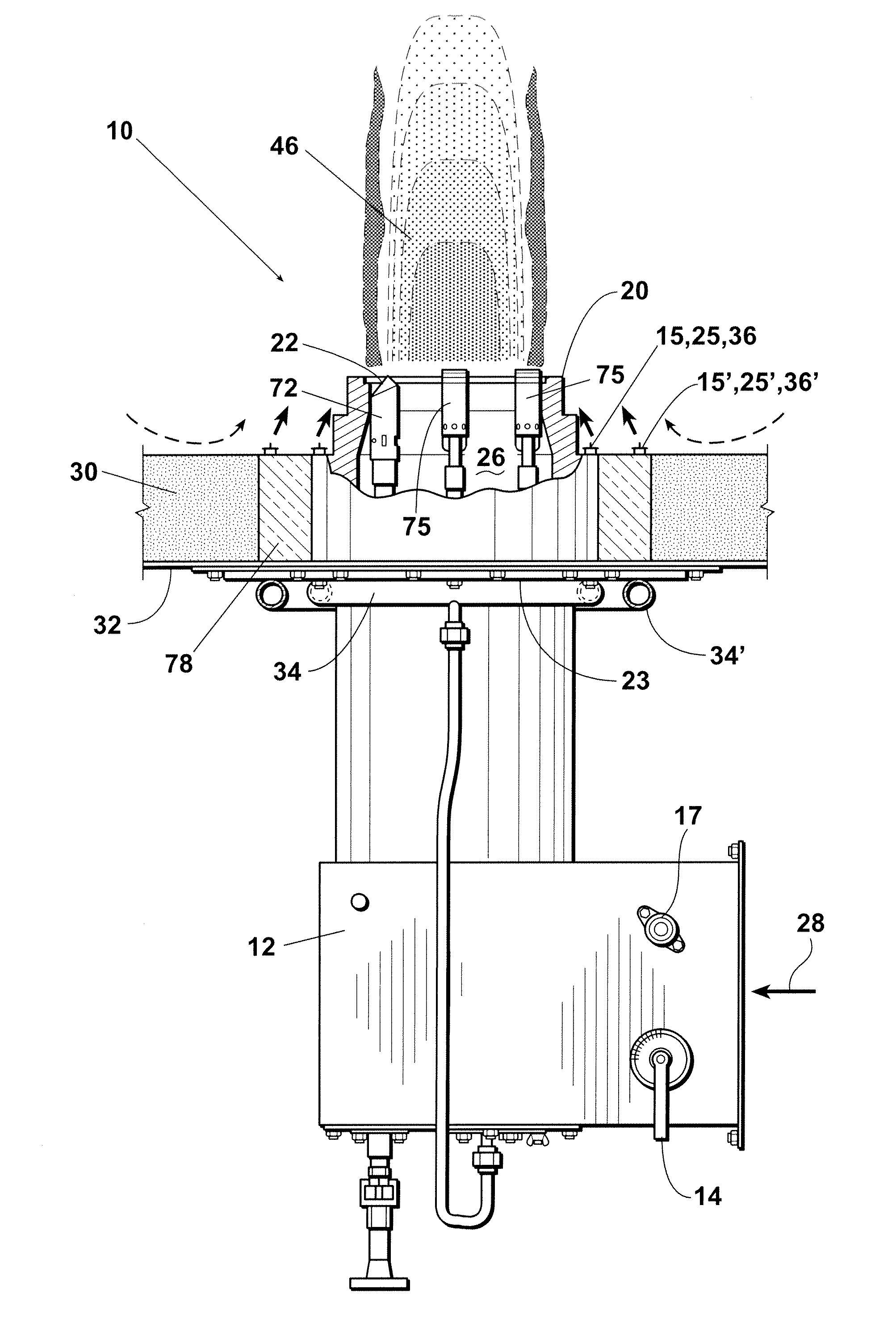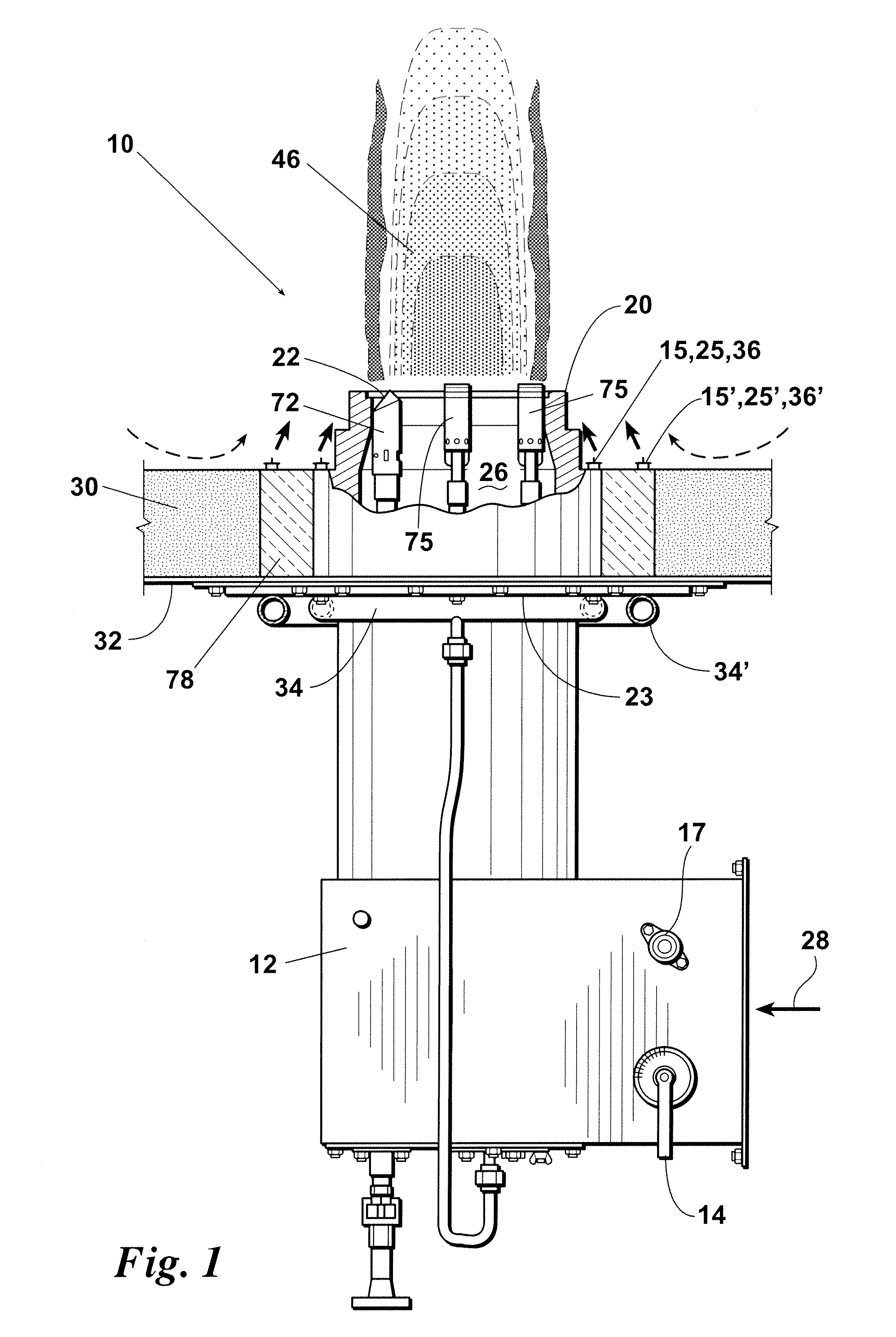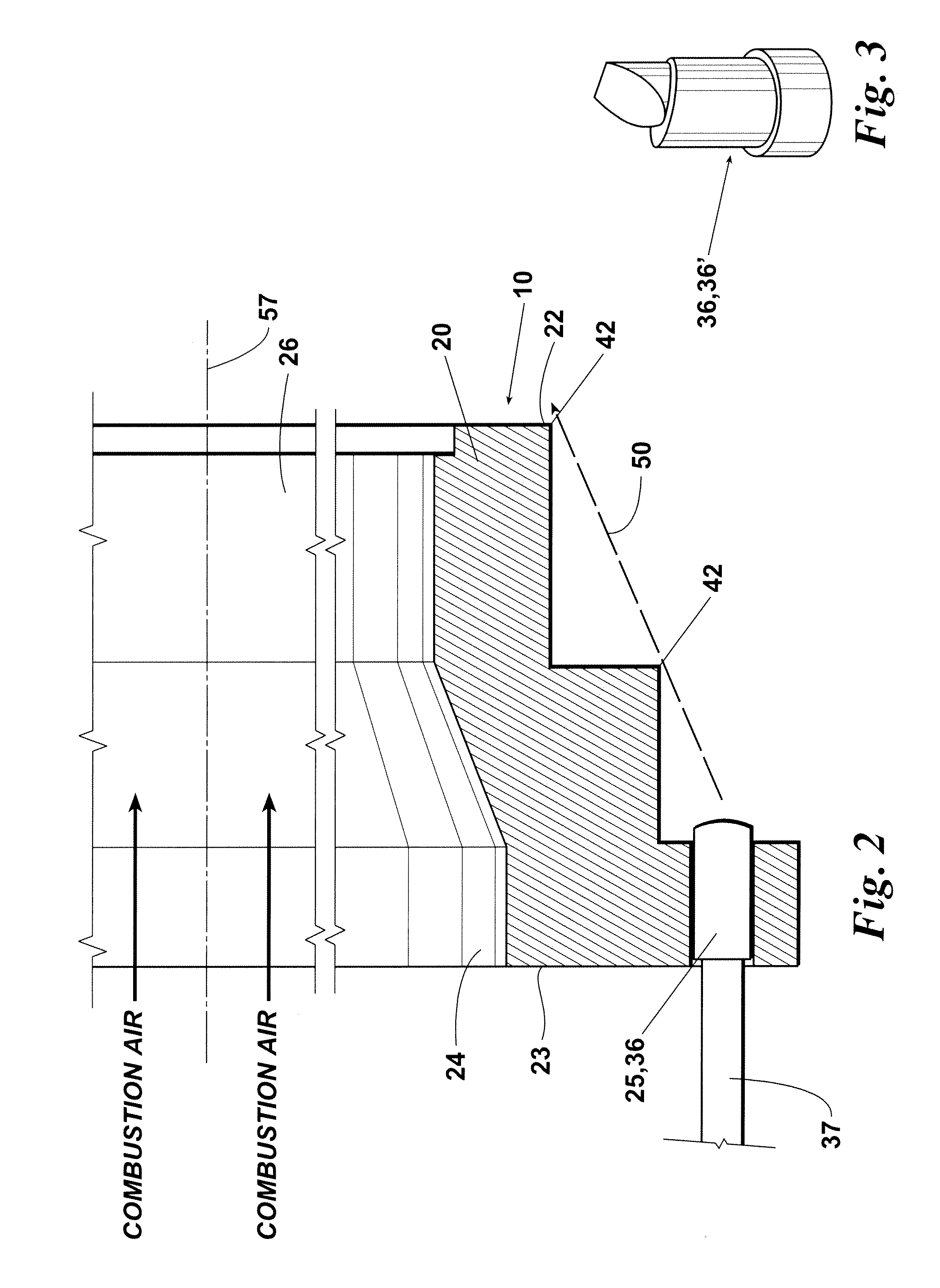Low NOx burner apparatus and method
a low-nosub>x/sub>burner and burner technology, applied in lighting and heating apparatus, combustion types, combustion using lumps and pulverizing fuel, etc., can solve problems such as thermal nosub>x/sub>reduction, and achieve less complex, less expensive, and more stable operation
- Summary
- Abstract
- Description
- Claims
- Application Information
AI Technical Summary
Benefits of technology
Problems solved by technology
Method used
Image
Examples
Embodiment Construction
[0048]Before explaining the present invention in detail, it is important to understand that the invention is not limited in its application to the details of the preferred embodiments and steps described herein. The invention is capable of other embodiments and of being practiced or carried out in a variety of ways. It is to be understood that the phraseology and terminology employed herein is for the purpose of description and not of limitation.
[0049]It will also be understood by those of ordinary skill in the art that, unless otherwise specified, the inventive features, structures, and steps discussed herein can be advantageously employed using any number of exterior fuel ejection nozzles, each having one or any other number of flow ejection ports provided therein. In addition, the inventive burners described herein can be oriented upwardly, downwardly, horizontally, or at generally any other desired operating angle.
[0050]Referring now to the drawings, FIGS. 1 and 2 depict an embo...
PUM
 Login to View More
Login to View More Abstract
Description
Claims
Application Information
 Login to View More
Login to View More - R&D
- Intellectual Property
- Life Sciences
- Materials
- Tech Scout
- Unparalleled Data Quality
- Higher Quality Content
- 60% Fewer Hallucinations
Browse by: Latest US Patents, China's latest patents, Technical Efficacy Thesaurus, Application Domain, Technology Topic, Popular Technical Reports.
© 2025 PatSnap. All rights reserved.Legal|Privacy policy|Modern Slavery Act Transparency Statement|Sitemap|About US| Contact US: help@patsnap.com



